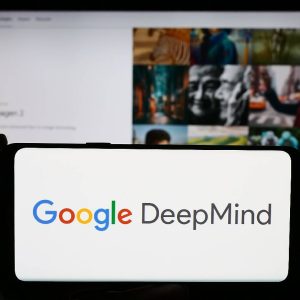
Tech giants investing in AI and automation is driving greater adoption of low code tools. Microsoft and Salesforce are among the biggest beneficiaries of this trend, new research says. It comes as another report suggests the global AI sector could be worth $1.3trn within a decade, driven largely part by generative AI.

Low code tools, which give business users with limited technical knowledge the ability to build their own digital systems through simple interfaces, have boomed in popularity in recent years, and the AI revolution is set to accelerate this trend.
Low code + AI = high productivity design tools
The new report on the low-code landscape from tech analysts at GlobalData has found that efforts to embed generative AI into existing products is helping Microsoft and Salesforce gain traction. For Microsoft this is from coupling its Power Automate service with its Azure OpenAI offering, while Salesforce has consolidated its Flow/Automation and Einstein tools into a new Data Cloud platform.
These are among a number of moves to bring foundation model AI into the low-code market, including through code generation tools like Microsoft’s GitHub Copilot. The two companies aren’t alone in expanding into low code, with Azure’s biggest rivals in the public cloud – Amazon‘s AWS and Google Cloud – both offering their own versions.
Charlotte Dunlap, research director at GlobalData, said the cloud hyperscalers are expanding existing visualisation and automation tools to take advantage of developments in the generative and foundation model AI space. “This is achieved through high-productivity design tools, AI-injected connectors to backend systems, increased use of machine learning models, and intelligent automation technologies,” explained Dunlap.
Adding foundation model AI and generative AI to low-code tools is helping to eliminate a lot of the baseline coding and scripting that was previously required. This is effectively handed off to the AI to handle, creating simplified tools for the end user. It is also helping to automate operational provisioning within DevOps teams, allowing for more rapid rollouts and updates.
This level of automation is also appearing in tools from companies like Cisco through smart port allocation or simplified security provisioning. Effectively handing off common practices and company requirements to AI and low-code tools, democratising the process.
“Consolidating these innovations into low-code platforms and solutions helps abstract complex configurations required to react to business events, further automating business processes and enhancing the customer experience,” said Dunlap.
She added: “It’s not surprising that emerging technologies, including process automation, application security, and observability—whose daunting complexities threaten adoption—are also being coupled with low-code platforms.”
Economic growth from AI
A report by Bloomberg Intelligence predicts the AI industry will see a CAGR of 42% over the next decade, growing from $40bn in 2022 to $1.3trn by 2032. Generative AI tools alone could add $280bn, driven by software revenue including specialised assistants, new infrastructure products and coding copilots.
The biggest beneficiaries of the economic growth from AI will be the cloud hyperscalers, with Nvidia taking the bulk of the hardware growth. This, according to BI, will come as enterprise shifts more workload into the public cloud.
Current spending on generative AI is about 1% of total budget across IT hardware, software services, ad sepdning and gaming, but this is expected to rise to 10% by 2042 driven largely by infrastructure as a service spending for training LLMs.
Mandeep Singh, senior technology analyst at Bloomberg Intelligence and lead author of the report, said the world is on the verse of an explosion of growth in the AI sector that will change the way the technology industry operators. He said AI “is set to become an increasingly essential part of IT spending, ad spending, and cybersecurity as it develops”.






